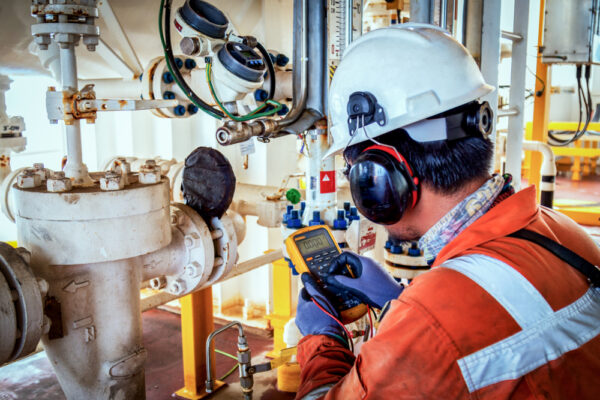Getting My Roar Solutions To Work
Table of ContentsRoar Solutions for BeginnersThe smart Trick of Roar Solutions That Nobody is DiscussingSome Ideas on Roar Solutions You Need To Know
In such an ambience a fire or explosion is possible when 3 basic conditions are met. This is commonly described as the "dangerous area" or "combustion" triangle. In order to shield installments from a potential surge a method of analysing and identifying a possibly hazardous area is required. The purpose of this is to guarantee the right choice and installation of tools to eventually prevent a surge and to make sure security of life.

No equipment needs to be set up where the surface area temperature level of the equipment is above the ignition temperature of the given danger. Below are some usual dust hazardous and their minimal ignition temperature. Coal Dirt 380C 225C Polythene 420C (melts) Methyl Cellulose 420C 320C Starch 460C 435C Flour 490C 340C Sugar 490C 460C Grain Dirt 510C 300C Phenolic Material 530C > 450C Aluminium 590C > 450C PVC 700C > 450C Soot 810C 570C The likelihood of the danger being present in a focus high sufficient to create an ignition will differ from area to place.
In order to identify this risk an installment is separated into areas of threat depending upon the amount of time the unsafe exists. These areas are described as Zones. For gases and vapours and dusts and fibers there are three zones. Area 0 Area 20 A dangerous atmosphere is highly most likely to be existing and might be present for extended periods of time (> 1000 hours annually) or even continuously Area 1 Area 21 A harmful atmosphere is feasible however unlikely to be existing for lengthy durations of time (> 10 450 C [842 F] A category of T6 implies the minimal ignition temperature is > 85 C [185 F] Hazardous location electric equipment possibly made for usage in higher ambient temperature levels. This would indicated on the ranking plate e.g. EExe II C T3 Ta + 60C( This indicates at 60C ambient T3 will certainly not be surpassed) T1 T1, T2, T3, T4, T5, T6 T2 T2, T3, T4, T5, T6 T3 T3, T4, T5, T6 T4 T4, T5, T6 T5 T5, T6 T6 T6 A T Class ranking of T1 means the maximum surface temperature level produced by the tool at 40 C is 450 C. Presuming the linked T Course and Temperature score for the devices are appropriate for the location, you can always use an instrument with a more strict Division ranking than needed for the location. There isn't a clear answer to this inquiry. It truly does rely on the sort of equipment and what repairs need to be performed. Devices with details examination treatments that can not be done in the field in order to achieve/maintain 3rd party ranking. Have to come back to the manufacturing facility if it is prior to the devices's service. Area Repair Service By Authorised Personnel: Complex testing may not be required however details treatments may need to be followed in order for the tools to maintain its third party rating. Authorised personnel should be employed to do the job appropriately Repair should be a like for like replacement. New element should be considered as a direct replacement needing no special testing of the devices after the repair service is total. Each tool with a dangerous ranking must be assessed independently. These are laid out at a high level listed below, but also for more detailed information, please refer directly to the standards.
More About Roar Solutions
The devices register is a detailed data source of devices documents that consists of a minimum set of areas to determine each product's place, technical parameters, Ex classification, age, and environmental information. The proportion of Detailed to Close examinations will certainly be determined by the Equipment Risk, which is evaluated based on ignition risk (the probability of a source of ignition versus the chance of a combustible environment )and the dangerous area category
( Zone 0, 1, or 2). Applying a robust Risk-Based Evaluation( RBI )strategy is important for guaranteeing conformity and safety in managing Electrical their explanation Equipment in Hazardous Areas( EEHA).
Roar Solutions for Dummies

In regards to eruptive danger, a harmful area is an environment in which an eruptive environment is present (or may be expected to be present) in amounts that call for unique preventative measures for the building and construction, setup and use devices. eeha courses. In this post we explore the obstacles encountered in the office, the threat control procedures, and the required expertises to function safely
It is an effect of contemporary life that we produce, store or manage a variety of gases or liquids that are regarded flammable, and a range of dirts that are deemed flammable. These compounds can, in particular conditions, create explosive ambiences and these can have major and unfortunate repercussions. The majority of us recognize with the fire triangle get rid of any among the 3 aspects and the fire can not occur, yet what does this mean in the context of dangerous locations? When breaking this down right into its simplest terms it is basically: a mix of a certain amount of launch or leak of a certain compound or material, blending with ambient oxygen, and the visibility of a source of ignition.
In a lot of circumstances, we can do little concerning the levels of oxygen in the air, however we can have substantial impact on sources of ignition, as an example electrical devices. Hazardous areas are documented on the hazardous area classification illustration and are recognized on-site by the triangular "EX LOVER" indication. Right here, among various other vital information, zones are split into three types relying on the threat, the likelihood and duration that an explosive atmosphere will exist; Zone 0 or 20 is considered the most dangerous and Zone 2 or 22 is considered the least.
Comments on “Roar Solutions - The Facts”